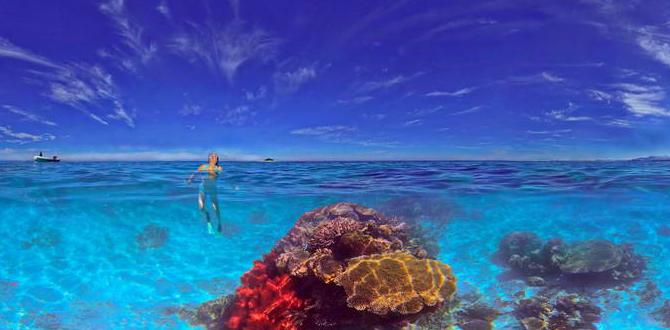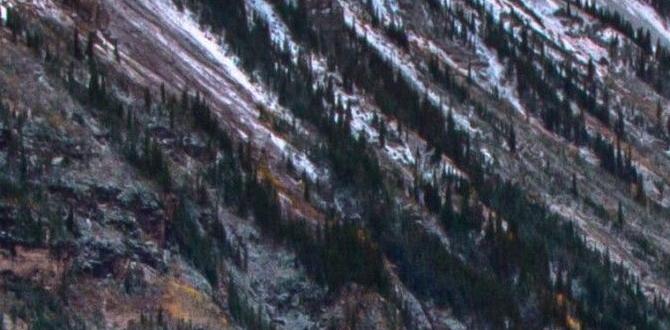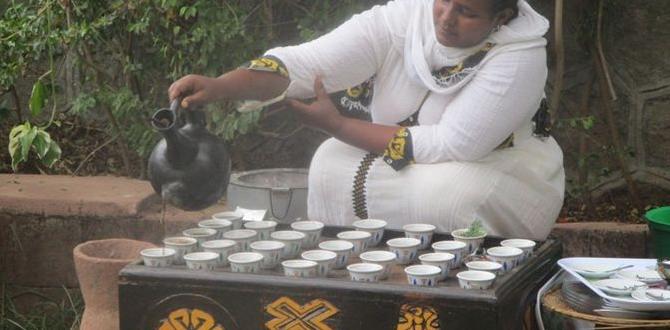Discover the Basque Country without the crowds! This guide offers a refreshing itinerary focusing on hidden gems and off-peak experiences, ensuring a peaceful and authentic adventure. Explore charming towns, stunning coastlines, and delicious cuisine at your own pace.
Planning a trip can feel overwhelming, especially when you dream of serene landscapes and authentic cultural experiences but dread large tourist throngs. The beautiful Basque Country, with its unique culture, stunning coastlines, and mouthwatering food, is a prime example. Summer can bring bustling crowds to its popular spots. But what if you could experience its magic without the stress of over-tourism? This guide is here to show you how!
We’ll walk you through creating a fantastic Basque Country itinerary that prioritizes peace and quiet while still showcasing the region’s best. Get ready to explore charming villages, breathtaking natural beauty, and savor incredible food, all at a gentler pace.
Why Seek a No-Crowds Basque Country Itinerary?
The Basque Country is a treasure trove, offering everything from sun-drenched beaches and dramatic cliffs to vibrant cities and ancient traditions. However, its most famous destinations, like San Sebastián and Bilbao, can attract significant crowds, especially during peak season (summer and holidays). This can make for a less immersive and more rushed experience.
A no-crowds itinerary allows you to:
- Experience authentic local life without feeling like an outsider.
- Enjoy popular attractions with more space and a relaxed atmosphere.
- Discover hidden gems that might be overlooked in busier times.
- Savor Basque cuisine leisurely without long waits for tables.
- Connect more deeply with the culture and stunning landscapes.
This approach is perfect for travelers who value tranquility, authentic encounters, and a chance to truly soak in the destination. It’s also a great strategy for families, ensuring a more manageable and less stressful travel experience, especially if you’re traveling with young children or individuals who might require specific comfort solutions, like adult or child diapers, for added peace of mind on long days out.
When to Visit the Basque Country for Fewer Crowds
Timing is everything when it comes to avoiding crowds. While the Basque Country is beautiful year-round, certain periods offer a more serene experience:
- Spring (April-May): The weather is mild and pleasant, flowers are in bloom, and tourist numbers are significantly lower than in summer. It’s a wonderful time for exploring cities and coastal paths.
- Autumn (September-October): This is often considered the sweet spot. The weather is still warm enough for enjoying the outdoors, the summer crowds have dispersed, and the autumn foliage adds a beautiful layer of color to the landscapes. The sea can still be warm enough for a brave dip!
While winter (November-March) offers the absolute fewest crowds, some attractions may have reduced hours, and the weather can be wetter and cooler, though still charming with festive markets around Christmas.
Crafting Your No-Crowds Basque Country Itinerary: A Step-by-Step Guide
Creating a custom itinerary is key to a crowd-free adventure. We’ll focus on a blend of well-loved spots visited during quieter times and introduce you to some lesser-known, equally captivating destinations.
Step 1: Define Your Priorities & Travel Style
Before diving into specific locations, consider what you want most from your trip:
- Are you a city explorer, nature lover, beach bum, or foodie?
- How much time do you have? (e.g., a long weekend, one week, two weeks)
- What’s your preferred pace? (e.g., relaxed and slow, or active and covers a lot)
- What’s your budget? Some areas might be more affordable outside peak season or in smaller towns.
Knowing these will help tailor the itinerary to your needs. For example, if comfort and accessibility are paramount, consider how much walking you’ll be doing and ensure accommodation options suit your requirements. If traveling with children or needing discreet comfort solutions like adult diapers or youth diapers, planning for facilities and accessibility at each stop becomes even more important.
A useful resource for understanding regional accessibility and services can be found through official tourism boards or organizations focused on accessible travel.
Step 2: Choose Your ‘Quiet Havens’ & Strategic Visits
Instead of hitting every major city, focus on a few key areas and explore them thoroughly, or mix popular spots with off-the-beaten-path locations. Here are some ideas:
Coastal Charm Beyond the Famous Beaches
While San Sebastián’s La Concha is iconic, consider these coastal gems:
- Zarautz: Known as the “Queen of the Beaches,” it’s a popular surf spot but retains a more local feel than San Sebastián. Visit in spring or autumn for a relaxed beach experience and excellent pintxos.
- Getaria: A picturesque fishing village south of Zarautz, famous for its grilled fish restaurants and the birthplace of designer Cristóbal Balenciaga. It’s smaller and often less crowded.
- Bermeo and Mundaka: These traditional fishing towns on the Urdaibai Biosphere Reserve offer stunning natural beauty and rich maritime history. Mundaka is world-renowned for its left-hand surf break, attracting surfers but fewer casual tourists.
Inland Exploration & Nature
The Basque countryside is lush and serene:
- Lekeitio: A beautiful medieval port town with two beaches and a charming island, Isla de San Nicolás, connected by a sandbar at low tide. It’s a delightful, less frantic coastal escape.
- Elantxobe: A breathtakingly steep village clinging to a cliffside, offering spectacular views. It feels like stepping back in time.
- Gorbea Natural Park: For hiking and nature lovers, this park offers vast forests, waterfalls, and ancient oak trees. It’s a fantastic alternative to crowded coastal walks.
Cities with Room to Breathe
Even major cities can be enjoyed peacefully:
- Vitoria-Gasteiz: The capital of the Basque Country is often overlooked by international tourists. It boasts a beautifully preserved medieval quarter, plenty of green spaces (it’s one of Europe’s greenest cities!), and a relaxed atmosphere.
- Bilbao (Strategic Visit): While the Guggenheim is a must-see, visit early on a weekday in the shoulder season. Explore the Casco Viejo (Old Town) in the morning or late afternoon for a more local vibe.
- Pamplona (Navarre): Though famous for its Running of the Bulls, Pamplona is a vibrant city year-round. Outside of festival times, its historic center, citadel, and surrounding countryside offer a rich, uncrowded experience.
Step 3: Plan Your Transportation
Efficient transport can make a big difference in avoiding crowds and maximizing your time.
- Rental Car: Offers the most flexibility for reaching smaller villages and natural parks. Book in advance, especially if traveling during shoulder seasons when availability can still be tight.
- Trains: Euskotren connects many coastal towns and cities, including Bilbao, San Sebastián, and Hendaye (French Basque Country). It’s scenic and avoids city parking woes.
- Buses: A reliable network connects most towns and cities. Companies like ALSA operate extensive routes.
For those with specific needs, like managing diaper changes for children or ensuring comfort for adults needing incontinence products during transit especially on longer journeys, a rental car can offer the privacy and convenience to stop as needed. Having travel-friendly diaper options, such as discreet adult diapers or reliable child diapers, packed in an accessible way, can remove a significant point of stress.
Step 4: Book Accommodation Strategically
To maintain a peaceful experience, consider where you stay:
- Smaller Towns: Opt for boutique hotels, guesthouses (casas rurales), or apartments in charming villages like Getaria, Lekeitio, or Elantxobe.
- City Stays: If staying in a larger city like Bilbao or Vitoria-Gasteiz, choose accommodation slightly outside the absolute city center but with good public transport links. This often means quieter streets and potentially better value.
- Book in Advance: Even in quieter shoulder seasons, well-located or highly-rated accommodations can fill up. Booking a few months ahead is wise.
Step 5: Embrace the Culinary Delights (Gently!)
Basque cuisine is world-renowned, and you can enjoy it without the frenzy:
- Pintxos Hopping: Instead of the busiest bars at peak evening hours, try pintxos early in the evening (around 7-8 PM) or even mid-afternoon. Many bars offer them throughout the day.
- Seek Local Recommendations: Ask your accommodation host or locals for their favorite eateries away from the main tourist drag.
- Lunch is King: Many restaurants offer excellent value ‘menu del día’ (set lunch menus) on weekdays, which are often less formal and less crowded than dinner.
A Sample Basque Country No-Crowds Itinerary (7 Days)
This itinerary balances stunning coastlines, charming towns, and a touch of city life, focusing on the Spanish Basque Country during spring or autumn.
Day 1-2: Coastal Charm in Getaria & Zarautz
Arrival: Fly into Bilbao Airport (BIO). Pick up your rental car or take a pre-booked transfer to Getaria (approx. 1 hour).
Accommodation: A charming hotel or apartment in Getaria.
Activities:
- Explore the picturesque harbor and narrow streets of Getaria.
- Visit the Balenciaga Museum for a dose of fashion history.
- Enjoy a leisurely lunch featuring fresh grilled fish at a local restaurant along the port.
- On Day 2, take a scenic walk or a short drive to Zarautz.
- Stroll along Zarautz’s long beach (Parador beach or Playa de Zarautz).
- Experience their pintxo scene – aim for early evening.
Why it’s no-crowds: While popular with locals, these towns are less overwhelming than San Sebastián, especially outside July/August. Visiting mid-week is even better.
Day 3: Medieval Port & Island Magic in Lekeitio
Travel: Drive along the scenic coastal road to Lekeitio (approx. 45 mins).
Accommodation: Guesthouse or hotel in Lekeitio.
Activities:
- Explore the medieval old town and its charming squares.
- Visit the Basilica of St. Mary of the Assumption.
- Walk across the sandbar (at low tide) to Isla de San Nicolás for stunning views.
- Relax on the Karraspio or Isuntza beaches.
- Enjoy a quiet dinner at a local restaurant.
Why it’s no-crowds: Lekeitio is a beloved local destination but retains a peaceful, authentic atmosphere. It’s a delightful antidote to busier resorts.
Day 4: Nature and Views in Elantxobe & Urdaibai
Travel: Short drive towards the Urdaibai Biosphere Reserve.
Accommodation: Stay in Lekeitio or a rural guesthouse nearby for ease.
Activities:
- Visit the almost impossibly perched village of Elantxobe. Wander its steep streets and marvel at the views.
- Explore more of the Urdaibai Biosphere Reserve – consider a walk or a visit to the Interpretation Centre.
- If interested in surfing culture, drive to Mundaka for its famous wave (even if you’re not surfing, the views are lovely).
Why it’s no-crowds: Elantxobe is a hidden gem that most tourists skip due to its dramatic, somewhat remote location. Urdaibai offers vast natural beauty with plenty of space.
Day 5-6: Green Capital & Culture in Vitoria-Gasteiz
Travel: Drive inland to Vitoria-Gasteiz (approx. 1.5 hours).
Accommodation: Hotel in or near the city center.
Activities:
- Explore the beautifully preserved medieval quarter, known as the ‘Almendra’ (Almond).
- Discover the city’s extensive network of parks and green spaces, including the Florida Park.
- Visit the Artium Museum of Contemporary Basque Art.
- Enjoy the relaxed pintxo bars and restaurants, which are less tourist-focused than coastal cities.
- Consider a short trip to the nearby Gorbeia Natural Park for a nature escape.
Why it’s no-crowds: Vitoria-Gasteiz is the administrative capital and a pleasant city, but it lacks the major international draw of San Sebastián or Bilbao, making it significantly less crowded year-round.
Day 7: Departure or a taste of Bilbao
Option A (Departure): Enjoy a final Basque breakfast in Vitoria-Gasteiz and drive back to Bilbao Airport (approx. 1 hour) for your departure.
Option B (Taste of Bilbao): Drive to Bilbao (approx. 1 hour). If time permits before your flight, visit the Guggenheim Museum (book tickets online in advance!) or take a walk through the Casco Viejo. Drive to Bilbao Airport for departure.
This itinerary is flexible. You could swap Vitoria-Gasteiz for a few days based in a quieter town near San Sebastián (like Orio or Getaria) and then do the city as a day trip during very off-peak hours, or focus more on inland regions like Álava for wine and countryside.
Key Considerations for a Stress-Free Trip
Even with a no-crowds itinerary, a few practical tips can enhance comfort and ease:
- Pack Smart: Comfortable walking shoes are essential. Layers are key for changeable weather. If traveling with children or needing discreet solutions, ensure you have your preferred brands of child diapers or adult incontinence products readily accessible in your day bag. Brands offering high absorbency and discretion can make longer excursions much more comfortable and worry-free.
- Learn Basic Phrases: While English is spoken in tourist areas, knowing a few Basque (Euskara) or Spanish phrases like “Kaixo” (Hello), “Eskerrik asko” (Thank you), “Mesedez” (Please), and “Goxo” (Delicious) is appreciated.
- Stay Hydrated and Nourished: Carry a reusable water bottle. Access to restrooms and changing facilities can be a consideration for families or individuals needing adult or child diapers; planning stops accordingly will be beneficial.
- Flexibility is Key: While planning is great, sometimes the best discoveries happen when you deviate from the plan. Embrace spontaneity!
Table: Basque Country Off-Peak vs. Peak Season Comparison
Here’s a quick look at what to expect:
| Aspect | Peak Season (July-August, Easter) | Shoulder Season (April-June, September-October) | Off-Peak Season (November-March) |
|---|---|---|---|
| Crowds | High, especially in San Sebastián, Bilbao hotspots. | Moderate, manageable. Popular spots still busy on weekends. | Low, very peaceful. |
| Accommodation Prices | Highest | Moderate | Lowest |
| Weather | Warm to hot, sunny spells likely. | Mild, pleasant, occasional rain. | Cool, occasional rain and wind, can be crisp and sunny. |
| Availability | Book well in advance. | Book in advance, especially for popular weekends. | More spontaneous booking possible, but check opening times. |
| Vibe | Bustling, energetic. | Relaxed, enjoyable. | Quiet, authentic, local feel. |
External Authoritative Link Example
For more insights into the unique culture and language of the Basque Country, the official Basque Government website provides a wealth of information on its history, traditions, and contemporary life. Understanding aspects of Basque culture can enrich your travel experience and help foster respectful interactions.
Frequently Asked Questions (FAQ)
Q1: Is it possible to visit the Basque Country without a car and still avoid crowds?
Yes, absolutely! While a car offers flexibility for remote villages, you can navigate between major towns and cities using trains (like Euskotren) and buses. Focus your stays in smaller towns or cities like Vitoria-Gasteiz. You can still find quieter spots even within larger cities by exploring off-peak hours and less touristed neighborhoods.







